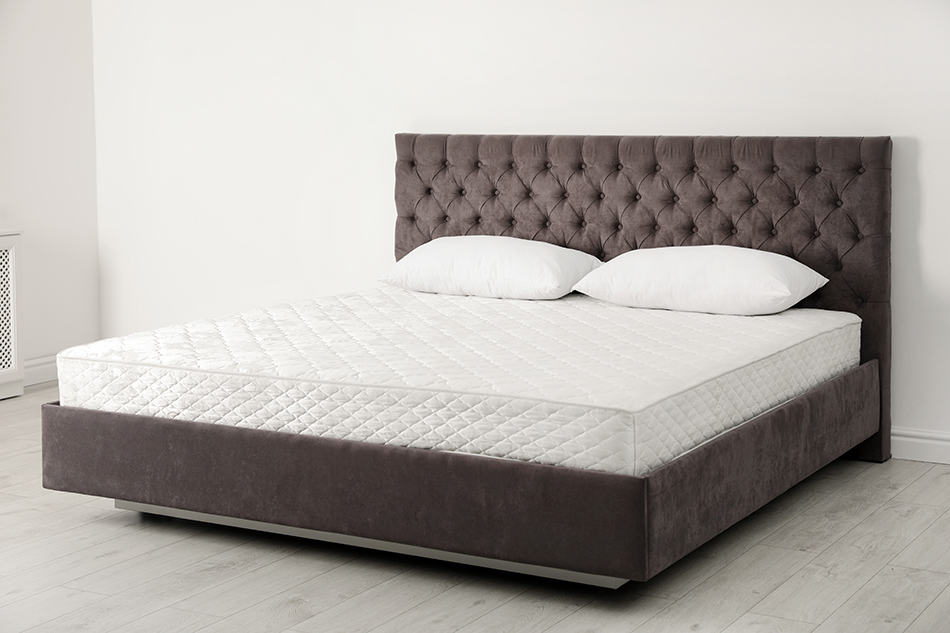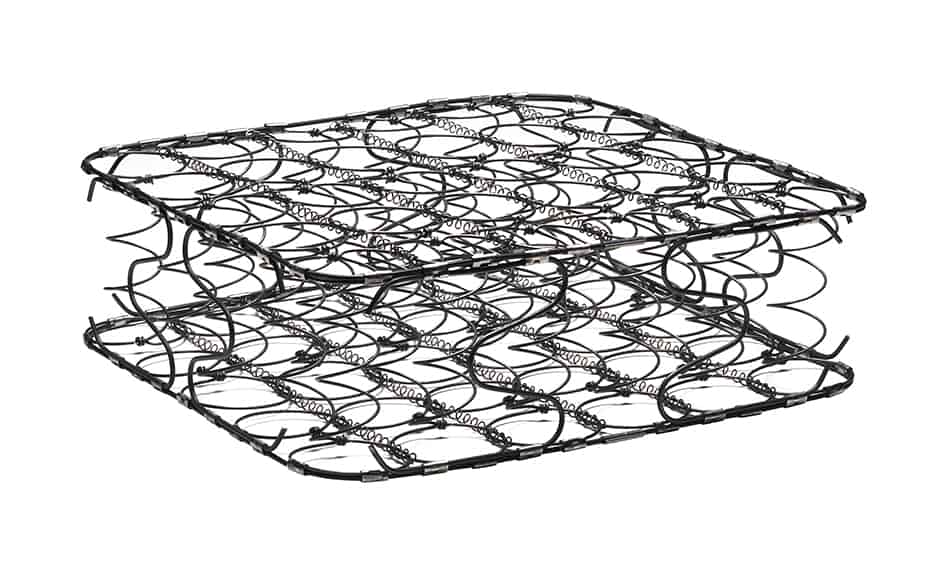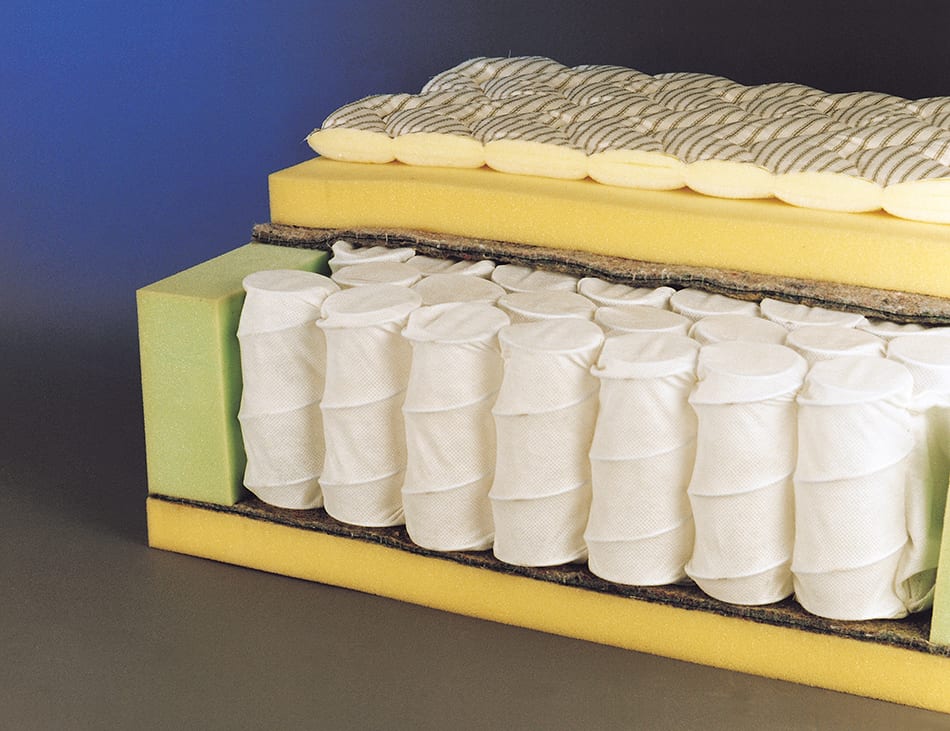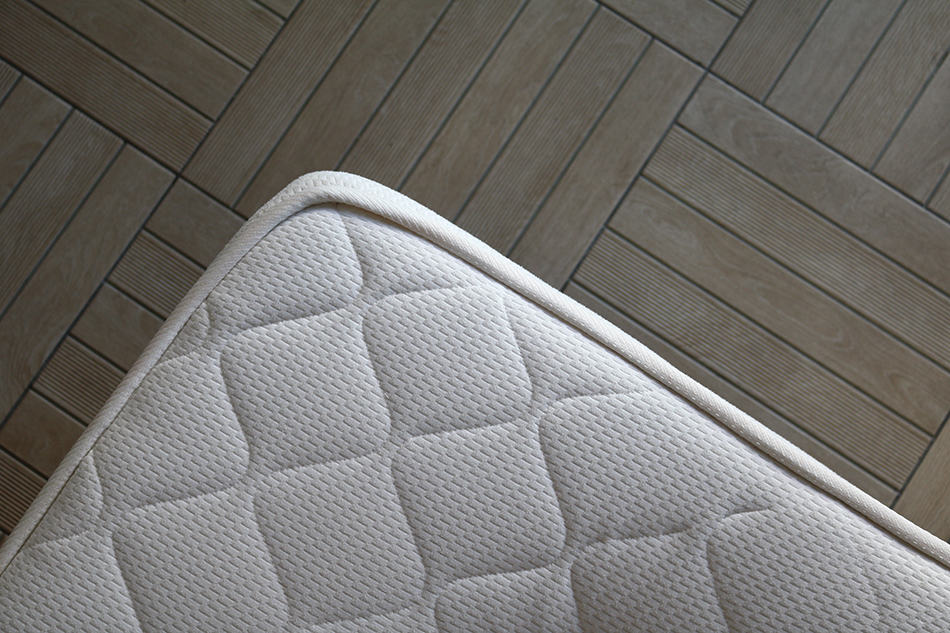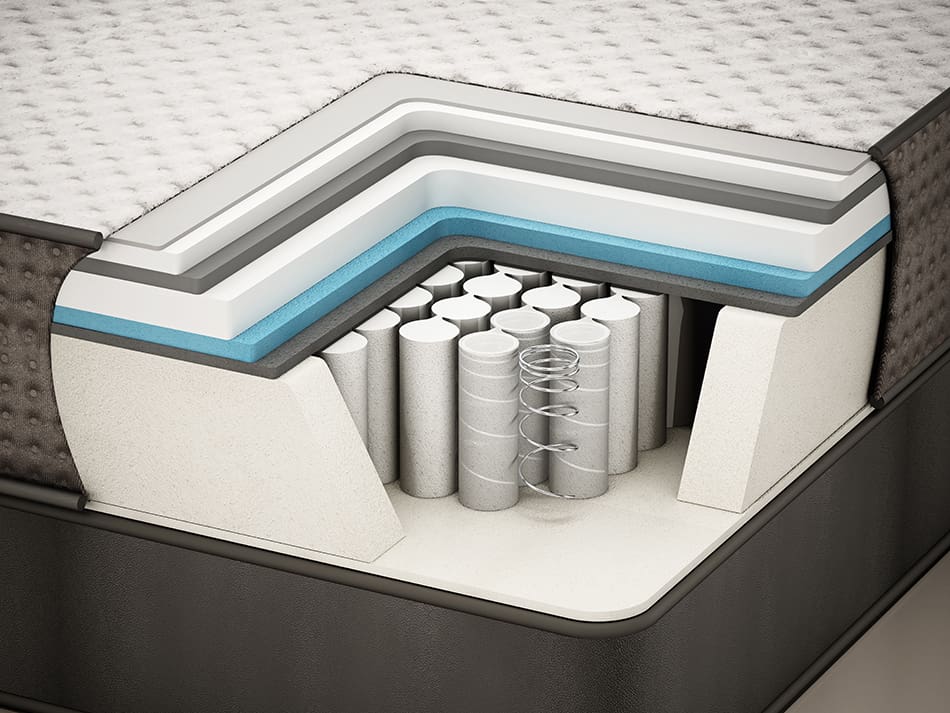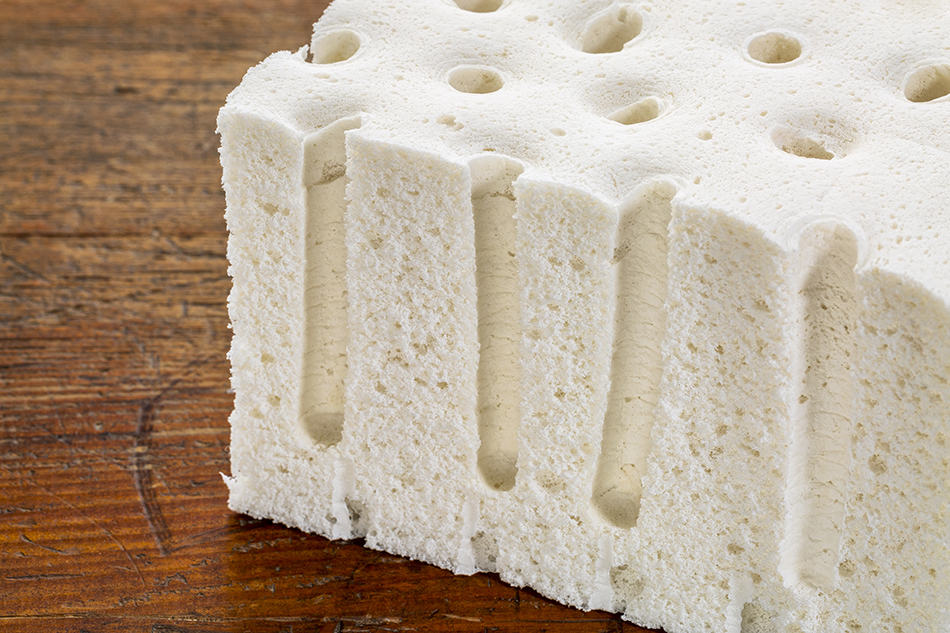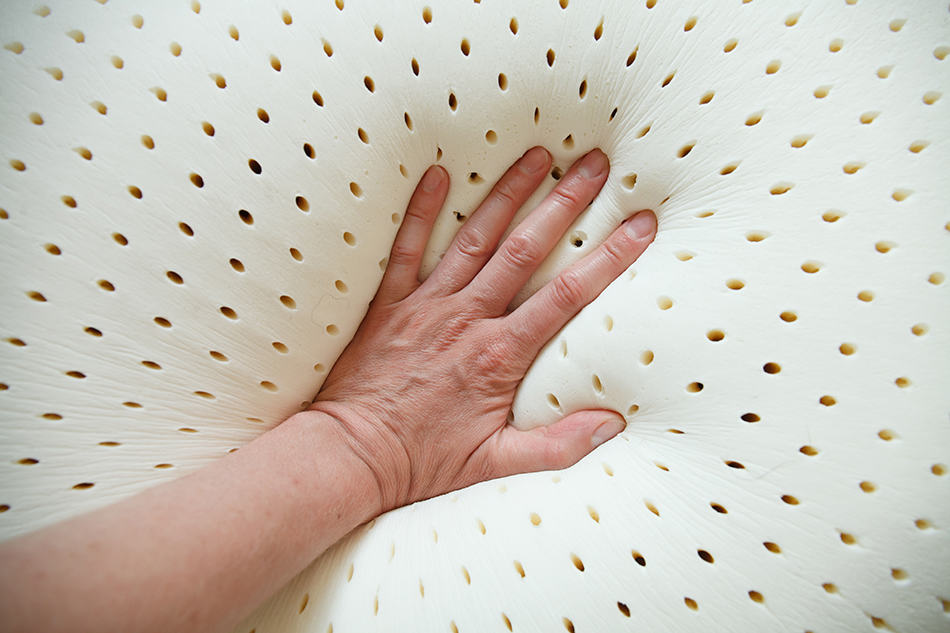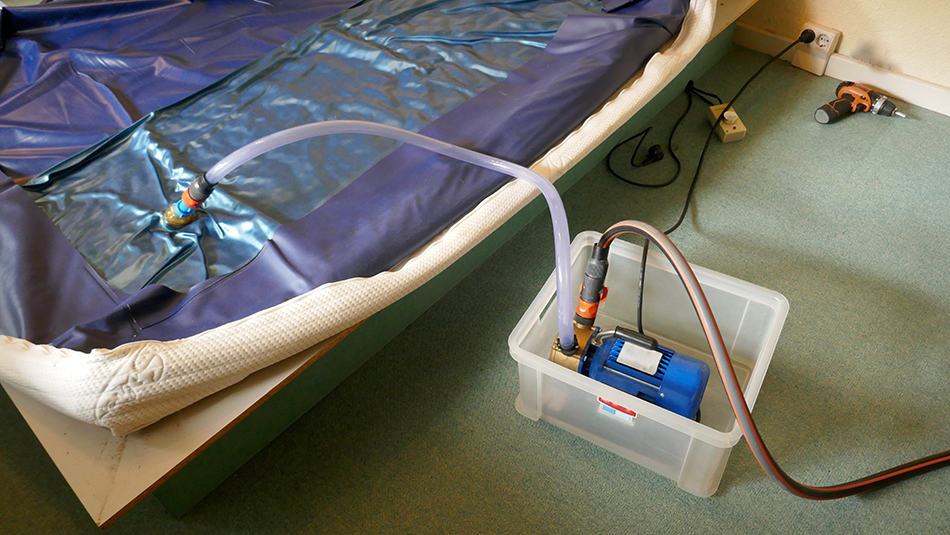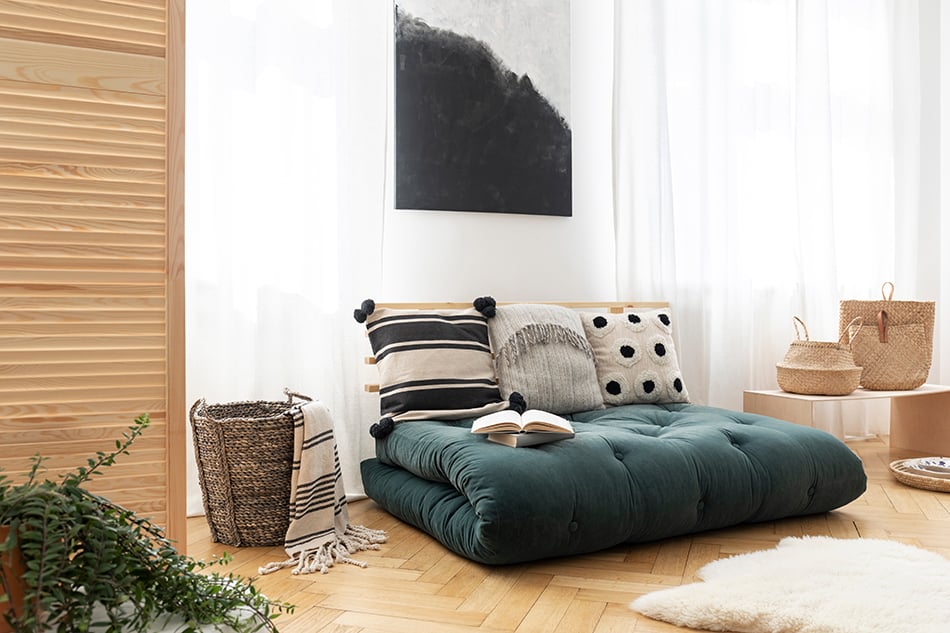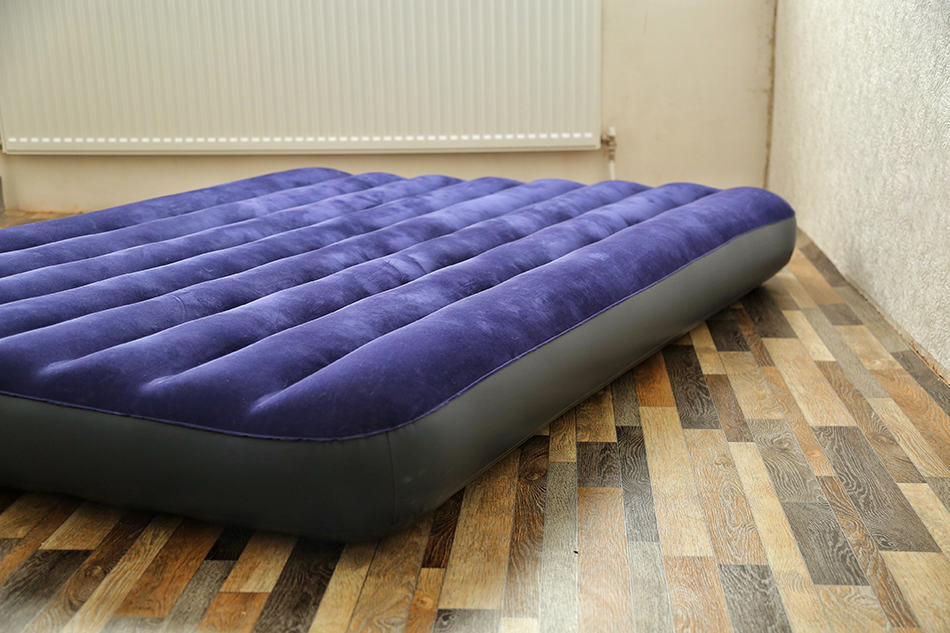According to research, the average human who lives up to the ripe old age of 80 will spend an average of 33 years sleeping. That’s over a third of a lifetime!
Knowing just how much time you could be spending in bed, don’t you think it’s worth paying more attention to your mattress? We think so. So, we’ve prepared a guide to help you choose the best type of mattress for a good night’s rest.
Innerspring Mattress
Since their sales started picking in the 1930s, innerspring mattresses have continued to be the best-selling mattress type. The innerspring is also known as a coil mattress because it’s made from an interconnected system of spring coils. The springs compress when weight, such as your body, is pressed against them.
A good quality mattress should contain at least 300 springs for a full mattress or about 400 for a queen or king size. You might be tempted to go for more coils in the hopes of getting a more comfortable bed, but bear in mind that a high coil count does not guarantee a better night’s sleep. In fact, you might find that the mattress is too firm.
Innerspring mattresses are popular because they offer excellent support and are affordable. They are also lighter, so they are easy to turn. But an innerspring mattress can also have some downsides that don’t make it ideal for all sleepers. Firstly, a coil mattress may not be as durable as a mattress constructed from another type of material.
With time, the springs don’t bounce back as well as before, and the bed tends to sag in the middle. Depending on the quality of your bed, you may find that you’ll need to replace it within three to five years of buying it.
Secondly, a common complaint about innerspring mattresses – particularly among couples – is that you can feel your partner’s movements since the coils are connected to one another. So, the quality of your sleep can be significantly impacted if you’re a light sleeper sharing a bed with someone who moves a lot at night.
Bonnel Spring Coil
Bonnel is the most common and oldest type of spring coil used in innerspring mattresses. The Bonnel coil is shaped like an hourglass, with a wider top and bottom and narrower middle. The springs in the mattress are all linked together with a wire, giving the bed an even feel and adequate support at a budget-friendly price.
However, for all the comfort offered by a Bonnel mattress, they don’t conform very well to the shape of your body. They are not as effective in evenly distributing your weight. So, if you’re someone who suffers from chronic joint or muscle pain, you may want to consider a different mattress type.
Offset Spring Coil
The offset coil has the same hourglass shape as the Bonnel spring. It’s a slight improvement on the Bonnel spring in that it offers better contouring around the shape of your body, owing to each coil being constructed with a hinge-like top and bottom. Offset coils are also not as squeaky as Bonnel springs, which tend to get noisier with age.
Marshall or Pocketed Coil
Unlike Bonnel or offset coils that are open, hourglass-shaped, and interconnected, pocketed coils are individually encased in textiles and have a uniform shape. They were invented by a Canadian engineer named James Marshall in 1899; therefore, they are also known as Marshall coils. Since the coils in a pocket spring mattress are separated from each other, they are the best spring mattress for adapting to the shape of your body.
They apply far less pressure to your back, hips, and shoulders. Pocketed mattresses are also less motion-sensitive. Generally, the overall experience of sleeping on them is superior to Bonnel or offset mattresses. However, due to a pocket-coil mattress requiring more material to construct, you should prepare to fork out a bit more money for it.
Memory Foam Mattress
Initially developed by NASA in the 1960s, memory foam was intended for use in aircraft but is now widely used in household furniture production. In mattresses, the memory foam used is a high-density low-resilience polyurethane.
It’s available in a variety of densities, usually expressed in kilograms per cubic meter. The higher the density, the better the quality of the mattress. Typically, a memory foam mattress with sixty to eighty kilograms per cubic meter is ideal.
When you lie on a memory foam mattress, you’ll know it instantly because it delivers an unmistakable “sinking-in” sensation that you won’t find on any other bed. Memory foam wraps around and cushions your body, relieving pressure on your joints and aligning your spine correctly. As a result, they are incredibly comfortable mattresses, especially loved by side and back sleepers.
A key feature that makes foam mattresses stand out compared to spring mattresses is that they retain their shape for longer. Even after years of using your foam mattress, you’ll find that it bounces back each and every time you get up.
However, some people may find that foam mattresses are not as bouncy as their spring counterparts. Also, the foam doesn’t allow air to flow freely, so these mattresses can feel quite hot. Still, the popularity of memory foam mattresses has increased in recent years.
Gel Foam Mattress
If you want all the body support and pressure-relieving benefits of a foam mattress, plus better temperature regulation, a gel foam mattress is your go-to option. Gel mattresses are made via an innovative production process where gel beads being infused or swirled into the foam. The gel material keeps you cool through improved air circulation or by absorbing heat from your body. So you can say goodbye to night sweats, especially during summer.
Gel mattresses are typically more expensive than foam-only mattresses due to the gel technology. They also weigh more than a foam mattress. And, when they’re new, they can give off a chemical smell, called off-gassing, which can last for up to four weeks. However, this can easily be solved if the bed is allowed to be aired out for a few days after you’ve bought it.
Polyfoam Mattress
Unlike memory foam, polyurethane foam, or polyfoam, is less dense, lower quality, and not as durable. It also doesn’t form around the contours of your body, so it doesn’t deliver the same level of support.
Polyfoam mattresses are commonly used as an additional comfort layer in a spring bed. Although polyfoam can also be used as a mattress on its own, it isn’t ideal for long-term use. It works as a cost-effective bedding solution in a rarely used guest room or for overnight visitors.
Bed in a Box Mattress
In the not-too-distant past, the process of buying a mattress involved visiting a bed shop, testing out a few models, and choosing your favorite one.
But you couldn’t take it home immediately because of its size, so you’d wait a day or two for it to be delivered in a truck. The bed-in-a-box mattress has completely changed this entire process. Today, buying a mattress is as simple as choosing it online. It’s still delivered to you, but now it’s in a convenience-sized box that’s small enough to be sent via standard shipping methods.
You might be wondering how it’s possible to fit an entire bed in a box. Well, the mattress is constructed from memory foam, which can be compressed by a specially adapted machine, then rolled and packed into a carton.
When your mattress arrives, all you have to do is unpack it and wait for a day or two for it to regain its shape. Many manufacturers offer a trial period for you to test the mattress and decide whether you want to keep it or not. Many people are drawn to bed in a box mattress because they are relatively inexpensive, plus the buying process is convenient and low-risk.
Hybrid Mattress
Hybrid mattresses are multi-layered and combine the best of the spring coil, different types of foam, and sometimes, gel. They’re among the fastest-growing mattress styles in the market today. You’ll find 3 layers in a standard hybrid mattress: a base layer, support core, comfort layer, and pillow top.
Each layer plays a different role. The base layer is the support foundation of the bed and usually features a layer of pocket coil springs and thick foam. Above that, you’ll find several comfort layers of high-resilience and pressure-relieving foam. The top layers of the mattress provide additional comfort and bounce.
They can be made from latex or memory foam, covered by a soft natural fabric. The main advantage of hybrid mattresses is that they can be customized to your needs. So, if you prefer to have better heat management, you can select an option that replaces the memory foam with a gel-infused top layer. The extent of the customization varies by brand, so check what each one offers before making your choice.
Organic Mattress
Virtually all consumer goods manufacturing has been impacted by the move toward products that cause less harm to the environment, and mattresses are no different.
Traditionally, bedding is constructed with synthetic, petroleum-based materials and often treated with chemicals to make them fire-resistant. Not only do these chemicals take years to biodegrade, but they are also toxic. They can be irritating and uncomfortable to sleep on for people who have sensitive skin or allergies.
It comes as no surprise that the demand for mattresses made from organic materials has increased. In contrast to traditional mattresses, organic mattresses are made of organic natural materials, like wool, cotton, and latex, which are non-toxic and free from chemicals.
Some mattresses are made with raw materials that already possess flame-retardant properties, but others are usually covered with layers of wool or specially designed glass materials to increase their fire safety.
Given their eco-friendly credentials, you’d expect organic mattresses to be adopted quickly by consumers. Unfortunately, their high price compared to other types of mattresses keeps many consumers away.
The average queen-size latex mattress can easily cost 2.5 times as much as the most expensive traditional spring mattress. However, as organic mattresses become more mainstream, they’ll likely become more affordable.
Latex Mattress
Latex mattresses provide a similar sleeping experience as memory foam, but they are an all-natural alternative. Latex is made from the sap of a rubber tree.
The sap is tapped from the tree bark, collected in buckets, and whipped by a machine into a thick froth. It is then poured into a rectangular mold and baked. The end result is a plush latex foam mattress, about six to 12 inches high. In some instances, the mattresses are made from a combination of natural and synthetic latex and are called “blended latex.”
Latex mattresses are breathable and cool. Since most natural latex contains no chemicals and potential irritants are washed out of it during the production process, it’s also suitable for people with allergies.
There are two types of latex mattresses: Dunlop and Talalay.
Dunlop Latex Mattress
If you like your mattress to have firm and sturdy support, a Dunlop latex mattress is an excellent choice. Dunlop latex is the densest latex and is less processed than Talalay latex. When you lie on the Dunlop mattress, you’ll notice that it gives just enough to be comfortable without feeling too bouncy. They’re a good option for people who suffer from back problems.
Talalay Latex Mattress
Talalay latex is softer than Dunlop. Due to its plush cushioning, it’s recommended for people who have muscle and joint pain. The production process for a Talalay mattress includes a few more steps than the Dunlop process.
After the raw latex has been whipped, it’s vacuum-sealed and frozen rapidly to push more carbon dioxide into it before it’s baked. As a result, the Talalay latex is airier and bouncier than Dunlop.
Adjustable Mattress
You’ve most likely seen adjustable mattresses in hospitals, but more manufacturers are starting to release models for use in private homes. These newer styles of adjustable mattresses work similarly to the ones used in healthcare facilities, so the sleeper can adjust the bed’s position. But they have a slimmer profile and are available in designs that are better suited to modern homes.
An adjustable mattress is excellent for people who have mobility issues, back problems, or injuries. It’s great for couples, too, who may have different sleeping styles and needs.
If you’re a snorer, they can also help you have a comfortable rest by allowing you to sleep in a more upright position to keep your airways clear. Even if health isn’t the primary motivation, getting an adjustable mattress still enables you to enjoy the overall experience of being in your bed. You can sit up to read, watch TV, or work in total comfort.
Waterbed Mattress
If you weren’t around 50 years ago, you’re forgiven for not knowing that waterbeds even existed. But, back in the 70s and 80s, they did. And they were all the rage! Waterbed mattresses are essentially large vinyl tanks filled with about 200 gallons of water for a queen-size bed.
The idea of sleeping on a waterbed might seem bizarre, but they are remarkably comfortable and pressure-relieving. Plus, the sensation of floating away is relaxing. Unfortunately, waterbeds turned out to be difficult and expensive to maintain.
They would routinely spring leaks and be extremely heavy. The impracticalities of waterbed mattresses led to their eventual decline. Although they are scarce, waterbeds are an interesting mattress alternative still being manufactured and sold today.
Futon Mattress
Futon mattresses originated in Japan and became popular in the US in the 80s. Western-style futons are used with a unique wood or metal frame with 2.5-inch slats to support the mattress. When it isn’t being used as a bed, the futon mattress and frame can be folded and turned into a couch.
Futon mattresses are about 6 inches high and filled with layers of fabric or foam, and covered with polyester or cotton. The layers are tufted to keep them from moving around. Futons are firm, so if you’re a side sleeper, you likely won’t find this mattress comfortable because of the pressure you’d feel on your hips and shoulders after lying in it for a while.
Some variations of the futon are filled with latex or spring coils to make them more comfortable. Despite these improvements, Western futons have struggled to break away from being perceived as temporary beds or one that’s only suitable for college dorm rooms.
Air Mattress
Air mattresses are inflatable beds made from polyvinyl chloride (PVC). The top of the mattress is usually covered with a soft fabric, so it doesn’t stick to you and stops you from sliding off. The mattress is inflated using a manual or electric air pump.
Although air mattress designs have come a long way, and manufacturers have made efforts to improve their comfort, it still isn’t a good idea to use it as your permanent bed.
You’ll love the feeling of floating on air for one or two nights, but the lack of support and noise that some air beds make when you move around will wear thin pretty quickly. However, air mattresses’ portability and easy setup make them an excellent option when you need a bed for visitors but don’t have a guest room.
